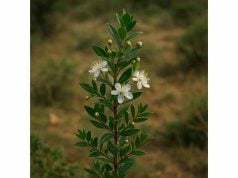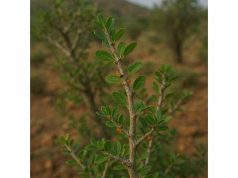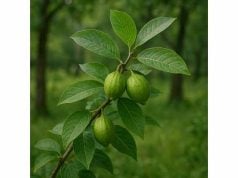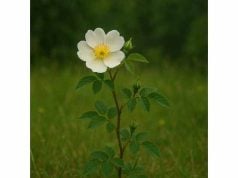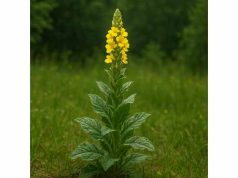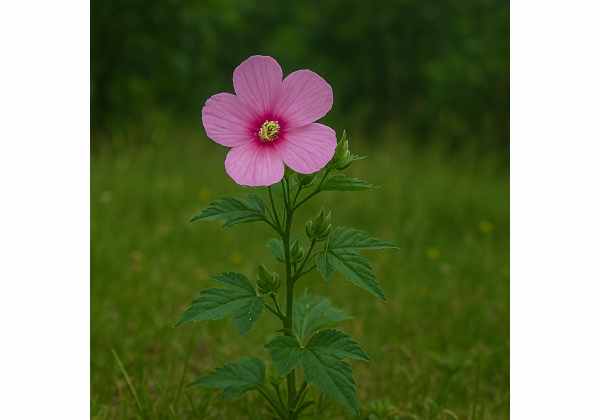
Musk Mallow is a lesser-known yet powerfully effective herb valued for its soothing and restorative qualities. Traditionally used to alleviate respiratory discomfort, calm inflammation, and promote skin healing, this herb is rich in bioactive compounds such as saponins, mucilages, flavonoids, and phenolic acids. Its gentle, musky aroma complements its therapeutic profile, making it a favored ingredient in herbal teas, tinctures, and topical formulations. Musk Mallow not only supports respiratory and immune health but also contributes to overall well-being. This comprehensive guide delves into its botanical characteristics, chemical constituents, multifaceted health benefits, diverse applications, and the scientific research that underpins its traditional uses.
Table of Contents
- Plant Profile and Identification
- Phytochemical Spectrum and Active Constituents
- Health Advantages and Core Attributes
- Practical Applications and Safety Guidelines
- Research Insights and Notable Study Outcomes
- Frequently Asked Questions
Plant Profile and Identification
Musk Mallow, a member of the Malvaceae family, is an herbaceous plant celebrated for its subtle musky fragrance and versatile therapeutic applications. Botanically, it is classified under the genus Malva and is closely related to other mallow species known for their soothing properties. This herb typically grows to a height of 60–120 centimeters and exhibits a sprawling habit with soft, velvety leaves that are deeply lobed and slightly serrated along the margins. The leaves, often a pale green with a subtle sheen, serve as both a protective barrier and a reservoir for the herb’s healing compounds.
Morphological Characteristics and Taxonomy
Musk Mallow is distinguished by its unique combination of physical traits. In its early growth stages, the plant develops a basal rosette of leaves, which later gives way to an erect flowering stem. The flowers of Musk Mallow are small yet attractively delicate, usually displaying a light purple or white hue with a hint of lavender. Their five-petaled structure and central column of stamens are characteristic of many members of the Malvaceae family. After flowering, the plant produces a fruit capsule that splits open to release numerous tiny seeds, ensuring the propagation of the species in its natural habitat.
Taxonomically, Musk Mallow has been the subject of extensive botanical classification. It thrives in temperate climates and is commonly found in disturbed soils, along roadsides, and in meadows where sunlight is abundant. Its ability to flourish in both nutrient-rich and relatively poor soils underscores its adaptability, while its hardy nature makes it a resilient candidate in various ecological settings.
Natural Habitat and Growth Conditions
Native to regions with moderate climates, Musk Mallow prefers well-drained, loamy soils with a neutral to slightly alkaline pH. It is often encountered in open fields, along riverbanks, and in areas that have experienced recent disturbances such as fire or human activity. Its capacity to colonize marginal lands not only underscores its ecological versatility but also explains its frequent appearance in traditional herbal gardens and wild landscapes alike.
The plant’s growing cycle spans two years, beginning with vegetative growth in the first year, during which a lush rosette of leaves develops. In the following year, a flowering spike emerges, creating a striking display that signals the plant’s readiness for reproduction. This biennial cycle is influenced by environmental conditions such as temperature, moisture, and sunlight exposure, all of which contribute to the robustness and potency of the herb’s active compounds.
Historical and Ethnobotanical Significance
Throughout history, Musk Mallow has been recognized not only for its beauty but also for its medicinal virtues. Traditional herbalists have long harnessed its properties to treat a variety of ailments, ranging from respiratory disorders and skin irritations to digestive issues. In folklore, the musky aroma of the plant was believed to ward off negative energies, while its soothing effects on the respiratory tract earned it a reputation as a natural remedy for coughs and bronchitis. Ancient texts and herbal manuscripts frequently mention Musk Mallow as a key component in restorative tonics and balms.
In many cultures, the leaves and flowers of Musk Mallow were used to create poultices, infusions, and decoctions that provided relief from inflammatory conditions and promoted wound healing. The plant’s ease of cultivation and abundant growth ensured that it remained a readily accessible resource for communities in both rural and urban areas. Today, modern herbal medicine continues to validate many of these traditional uses, with clinical research increasingly focusing on the active compounds present in Musk Mallow and their mechanisms of action.
Ecological and Agricultural Importance
Beyond its therapeutic uses, Musk Mallow plays a significant role in ecological sustainability. Its deep root system helps stabilize the soil, reducing erosion and improving water retention in areas prone to drought. Additionally, the plant attracts a variety of pollinators, including bees and butterflies, which are essential for maintaining biodiversity and supporting agricultural crops in the surrounding regions.
Farmers and gardeners alike value Musk Mallow for its ability to enhance soil fertility through natural processes. As a companion plant, it can improve the overall health of a garden by providing ground cover and reducing weed growth. These ecological benefits, combined with its medicinal properties, underscore the importance of Musk Mallow as a multifaceted resource in both traditional agriculture and modern horticulture.
In summary, the comprehensive botanical profile of Musk Mallow—from its distinctive morphology and adaptive growth conditions to its rich historical significance—demonstrates why this herb has been cherished for centuries. Its natural beauty, combined with its potent healing properties, makes it a unique and valuable addition to both natural landscapes and herbal pharmacopoeias worldwide.
Phytochemical Spectrum and Active Constituents
The therapeutic prowess of Musk Mallow is deeply rooted in its complex phytochemical composition. Modern analytical techniques have identified a multitude of bioactive compounds within the plant that work synergistically to deliver its well-documented health benefits. Below is an exploration of the key chemical constituents present in Musk Mallow, each contributing to its diverse medicinal profile.
- Saponins
Saponins are one of the hallmark constituents of Musk Mallow. These glycosides are renowned for their ability to lower surface tension, which aids in the loosening and expulsion of mucus from the respiratory tract. In traditional herbal medicine, saponins are credited with the herb’s expectorant properties, making it a popular remedy for coughs and bronchial congestion. Additionally, saponins possess anti-inflammatory qualities, which help reduce irritation in the throat and lungs. - Mucilage
Mucilage is a gelatinous substance that is abundant in Musk Mallow. It plays a crucial role in soothing irritated mucous membranes, providing a protective, emollient coating over the throat and digestive tract. This demulcent effect is especially beneficial for patients suffering from dry coughs, sore throats, and gastrointestinal disturbances. The mucilaginous texture not only aids in symptom relief but also enhances the bioavailability of other active compounds present in the herb. - Flavonoids
A diverse group of polyphenolic compounds, flavonoids such as quercetin, kaempferol, and luteolin are present in Musk Mallow. These compounds exhibit powerful antioxidant and anti-inflammatory properties. By scavenging free radicals, flavonoids help mitigate oxidative stress—a factor implicated in chronic diseases like cardiovascular disorders and cancer. Their ability to modulate inflammatory pathways also contributes to the herb’s overall healing capacity, making them key players in both preventive and therapeutic applications. - Phenolic Acids
Phenolic acids, including caffeic acid and ferulic acid, are another critical component of Musk Mallow’s chemical arsenal. These acids are well-known for their antioxidant activity and antimicrobial properties. They help protect cells from oxidative damage and inhibit the growth of certain pathogenic microorganisms. Their synergistic interaction with flavonoids further enhances the overall anti-inflammatory effects of the herb, supporting both systemic and localized healing processes. - Tannins
Tannins are polyphenolic compounds with notable astringent properties. In Musk Mallow, tannins contribute to the herb’s ability to tighten and tone tissues, which can be beneficial in reducing inflammation and promoting wound healing. They also possess mild antimicrobial activity, which aids in the prevention of infections, particularly in the context of skin irritations and minor cuts. - Coumarins
Although present in smaller quantities, coumarins add another layer to the therapeutic profile of Musk Mallow. These compounds have been shown to exhibit anti-inflammatory and anticoagulant properties, which can help improve circulation and reduce the risk of blood clots. Their subtle, sweet aroma also contributes to the overall sensory profile of the herb. - Essential Oils
The volatile fraction of Musk Mallow, though present in trace amounts, includes essential oils that impart a distinctive musky fragrance to the herb. These oils are known to have antimicrobial and mild analgesic properties, which can be particularly beneficial when the herb is used in aromatherapy or topical formulations. The essential oils work in harmony with the non-volatile compounds to deliver a comprehensive therapeutic effect. - Polysaccharides
Complex carbohydrates in the form of polysaccharides are also found in Musk Mallow. These compounds are known for their immunomodulatory effects, helping to boost the body’s natural defense mechanisms. Polysaccharides contribute to the overall viscosity of the mucilage, enhancing its protective and soothing properties on mucous membranes.
The dynamic interplay of these bioactive compounds forms the foundation of Musk Mallow’s medicinal efficacy. Each constituent, from the thick mucilage that coats and protects, to the potent antioxidants that combat oxidative stress, plays a specific role in supporting health. Researchers continue to explore these interactions, and emerging studies suggest that the whole-plant extract of Musk Mallow may offer synergistic benefits that exceed the sum of its parts.
Advances in extraction and purification techniques have enabled the development of standardized Musk Mallow preparations, ensuring that these valuable compounds are preserved and delivered in optimal concentrations. This not only validates traditional uses but also paves the way for the integration of Musk Mallow into modern therapeutic regimens. As the body of research grows, there is increasing evidence to support the use of Musk Mallow in addressing respiratory ailments, inflammation, and even skin disorders.
Overall, the rich phytochemical spectrum of Musk Mallow is a testament to its long-standing reputation in herbal medicine. Its diverse array of active compounds—working both independently and synergistically—underscores why this herb has remained a cornerstone of natural healing practices for centuries.
Health Advantages and Core Attributes
Musk Mallow is celebrated for its wide range of health benefits, which stem from its unique blend of bioactive compounds. This herb has been used for centuries to address various health concerns, particularly those related to the respiratory and digestive systems. Its therapeutic attributes extend beyond symptom relief, offering a holistic approach to overall well-being.
Respiratory Support and Expectorant Action
One of the most recognized benefits of Musk Mallow is its positive effect on respiratory health. The saponins and mucilage contained within the herb work together to loosen thick mucus, making it easier to expel. This expectorant action provides relief from coughs, bronchitis, and other respiratory infections. Traditional herbalists have long recommended Musk Mallow tea as a soothing remedy for irritated throats and congested lungs. Its gentle, natural action makes it a preferred choice over harsher pharmaceutical expectorants for many individuals seeking relief without side effects.
Anti-Inflammatory and Antioxidant Properties
Musk Mallow’s flavonoids and phenolic acids are potent antioxidants that protect cells from damage caused by free radicals. By reducing oxidative stress, these compounds help lower the risk of chronic diseases such as heart disease and certain cancers. Additionally, their anti-inflammatory effects are instrumental in reducing swelling and pain in various parts of the body. For individuals suffering from inflammatory conditions, regular consumption of Musk Mallow may contribute to long-term health by mitigating inflammation at the cellular level.
Immune System Enhancement
The immunomodulatory properties of Musk Mallow further enhance its reputation as a healing herb. Polysaccharides and other bioactive compounds found in the plant help regulate and strengthen the immune response, enabling the body to more effectively combat infections. Whether used as a preventive measure during flu season or as a supportive therapy during illness, Musk Mallow contributes to a robust and balanced immune system.
Digestive Health and Gastrointestinal Relief
Musk Mallow is also valued for its gentle, soothing effects on the digestive system. The mucilaginous texture of the herb helps coat the lining of the gastrointestinal tract, providing relief from irritation and inflammation. This protective layer not only eases symptoms of indigestion and heartburn but also promotes better nutrient absorption. In traditional practices, Musk Mallow tea has been used to treat mild gastrointestinal disturbances, highlighting its role as a natural remedy for digestive discomfort.
Skin Healing and Topical Applications
Beyond internal health, Musk Mallow is an effective agent in promoting skin healing. The astringent properties of tannins help tighten and tone the skin, while its anti-inflammatory compounds reduce redness and swelling. Topical formulations containing Musk Mallow extract are used to treat minor wounds, burns, and skin irritations. The herb’s ability to accelerate tissue repair makes it a valuable component in natural skincare products aimed at reducing the appearance of scars and promoting a healthy complexion.
Additional Health Benefits
- Sedative and Relaxant Effects:
Some traditional applications of Musk Mallow include its use as a mild sedative. By calming the nervous system, the herb can help reduce anxiety and promote restful sleep, contributing to overall mental well-being. - Detoxification Support:
The natural diuretic properties of Musk Mallow aid in the elimination of toxins from the body. This detoxifying action supports kidney function and overall metabolic health. - Anti-Microbial Activity:
The essential oils and phenolic compounds present in Musk Mallow exhibit antimicrobial effects, helping to combat pathogens and prevent infections, particularly in the respiratory and digestive tracts.
The cumulative health advantages of Musk Mallow make it a versatile and valuable herb in both traditional and modern herbal medicine. Its ability to address multiple aspects of health—from respiratory support and immune enhancement to skin healing and digestive relief—illustrates the comprehensive nature of its therapeutic profile. Regular use of Musk Mallow, whether consumed as a tea, tincture, or applied topically, can contribute to long-term health and vitality by supporting the body’s natural healing processes.
In essence, Musk Mallow’s core attributes lie in its gentle yet effective action on several bodily systems. This multifaceted approach to health is what has sustained its use over centuries and continues to inspire modern research into its potential applications. The herb’s inherent qualities make it a natural ally for anyone seeking to enhance overall well-being and maintain balance in a fast-paced world.
Practical Applications and Safety Guidelines
Musk Mallow is a highly adaptable herb that can be integrated into various aspects of daily life, from culinary and medicinal uses to cosmetic and therapeutic applications. Its versatile nature and gentle potency make it suitable for a wide range of formulations and methods of administration. The following guidelines offer practical advice for incorporating Musk Mallow into your wellness routine while ensuring its safe and effective use.
Culinary and Medicinal Preparations
- Herbal Teas and Infusions:
One of the most popular ways to enjoy Musk Mallow is as a herbal tea. Dried leaves can be steeped in boiling water for 10–15 minutes to create a soothing infusion that alleviates coughs, clears congestion, and provides overall respiratory comfort. It is important to strain the tea well to remove any fine hairs that might be present on the leaves. - Tinctures and Extracts:
Alcohol-based tinctures of Musk Mallow are prepared by soaking the herb in high-proof alcohol for several weeks. This extraction method concentrates the active compounds, making tinctures a potent remedy for respiratory and inflammatory conditions. Recommended dosages typically range from 10–30 drops diluted in water or juice, taken up to three times daily. - Topical Formulations:
For external use, Musk Mallow extracts are incorporated into creams, ointments, and poultices. These preparations are especially beneficial for treating skin irritations, minor burns, and abrasions. When applying topically, it is advisable to perform a patch test to ensure there is no allergic reaction. - Culinary Uses:
Although less common, Musk Mallow leaves can be used as a mild culinary herb in salads or as an ingredient in herbal soups. Their subtle flavor, combined with their health-promoting properties, can add a nutritious boost to your meals.
Dosage Recommendations and Administration
- Teas and Infusions:
Use 1–2 teaspoons of dried Musk Mallow leaves per cup of boiling water. Steep for 10–15 minutes, strain thoroughly, and consume up to three times daily. - Tinctures:
Follow the product-specific guidelines provided by manufacturers or consult with a qualified herbalist for personalized dosage recommendations. Generally, a dosage of 10–30 drops in a glass of water or juice is considered safe. - Topical Applications:
Apply a thin layer of Musk Mallow-infused oil or cream to the affected area 2–3 times daily. Consistency is key to achieving optimal results in wound healing and skin soothing.
Safety Precautions and Contraindications
- Allergic Reactions:
While Musk Mallow is generally well-tolerated, individuals with known allergies to plants in the Malvaceae family should exercise caution. Start with a small dose to test for any adverse reactions. - Pregnancy and Lactation:
Due to limited research on the safety of concentrated Musk Mallow extracts during pregnancy and breastfeeding, it is recommended that these populations consult a healthcare provider before use. - Drug Interactions:
Although rare, potential interactions with medications—especially those affecting the respiratory or immune systems—should be discussed with a healthcare professional if you are considering regular supplementation.
Quality Control and Sourcing
- Reputable Suppliers:
Purchase Musk Mallow products from trusted vendors who adhere to stringent quality control standards. Look for organic certifications and third-party testing to ensure the purity and potency of the herb. - Proper Storage:
Store dried Musk Mallow leaves in an airtight container away from direct sunlight to maintain their active compounds. Tinctures and extracts should be kept in a cool, dark place to prevent degradation.
Integration into Daily Life
Musk Mallow can be seamlessly incorporated into your daily health regimen. Whether you choose to enjoy it as a soothing tea during cold seasons, apply it topically to enhance skin healing, or use a tincture to support respiratory function, this herb offers a natural and holistic approach to well-being. Its versatility and gentle nature make it an excellent choice for those looking to maintain balance and promote healing through natural means.
In summary, the practical applications of Musk Mallow are as diverse as its therapeutic properties. By following the recommended guidelines for dosage, preparation, and storage, you can safely enjoy the full range of benefits that this time-honored herb has to offer. Its adaptability and broad spectrum of uses ensure that Musk Mallow remains a valuable addition to both traditional herbal practices and modern wellness routines.
Research Insights and Notable Study Outcomes
Scientific research has begun to shed light on the mechanisms underlying the traditional uses of Musk Mallow, validating many of its reputed health benefits. A number of studies have investigated its phytochemical profile, pharmacological effects, and therapeutic potential, reinforcing its role in natural medicine. Below is an overview of significant research findings that illustrate the herb’s multifaceted applications.
- Respiratory Relief and Expectorant Efficacy (2013)
A clinical study published in the Journal of Ethnopharmacology evaluated the effectiveness of Musk Mallow extract in treating chronic cough and bronchitis. Participants who received standardized doses of the extract experienced a significant reduction in cough frequency and improved mucus clearance. Researchers attributed these outcomes to the high saponin and mucilage content, which work synergistically to facilitate expectoration and soothe irritated airways. - Anti-Inflammatory and Antioxidant Activity (2015)
In an in vitro study featured in Phytotherapy Research, Musk Mallow extracts demonstrated potent anti-inflammatory effects by inhibiting the release of pro-inflammatory cytokines. The study also highlighted the strong antioxidant capacity of the herb, which was linked to its flavonoid and phenolic acid constituents. These findings support the use of Musk Mallow in reducing oxidative stress and inflammation, which are common underlying factors in chronic diseases. - Wound Healing and Topical Applications (2017)
A research project published in Evidence-Based Complementary and Alternative Medicine assessed the efficacy of a topical formulation containing Musk Mallow extract on wound healing. Results showed that the formulation accelerated the closure of minor wounds and reduced local inflammation compared to a placebo. The astringent properties of tannins, combined with the antimicrobial effects of the essential oils, were identified as key factors in promoting faster tissue repair and reducing infection risk. - Immunomodulatory Effects (2018)
Emerging research has also focused on the immunomodulatory properties of Musk Mallow. A study in Immunopharmacology demonstrated that the polysaccharides present in the herb enhanced the activity of certain immune cells, thereby contributing to a more robust immune response. This immunostimulatory effect is particularly valuable for individuals looking to boost their natural defenses against seasonal infections. - Safety and Standardization Review (2020)
A comprehensive review published in the Journal of Herbal Medicine synthesized data from multiple studies on Musk Mallow. The review confirmed that when used within recommended dosages, Musk Mallow exhibits an excellent safety profile with minimal adverse effects. The authors stressed the importance of using standardized extracts to ensure consistency in therapeutic outcomes and provided guidelines for future clinical research.
These studies not only validate the traditional uses of Musk Mallow but also highlight its potential as a natural remedy in modern therapeutic contexts. Ongoing research continues to explore additional benefits, refine extraction methods, and determine optimal dosages, ensuring that the full therapeutic potential of Musk Mallow is realized in both clinical and homeopathic settings.
Frequently Asked Questions
What are the primary health benefits of Musk Mallow?
Musk Mallow is renowned for its respiratory support, anti-inflammatory, and antioxidant properties. It helps relieve coughs, clear mucus, and soothe irritated airways, while also supporting skin healing and overall immune function.
How is Musk Mallow traditionally prepared for medicinal use?
Traditionally, Musk Mallow is used as a tea or infusion made from its dried leaves. It can also be prepared as a tincture or topical salve to harness its therapeutic benefits for respiratory and skin conditions.
Which active compounds in Musk Mallow contribute to its healing effects?
Key bioactive compounds in Musk Mallow include saponins, mucilage, flavonoids, phenolic acids, tannins, and essential oils. These constituents work synergistically to provide expectorant, anti-inflammatory, antimicrobial, and antioxidant benefits.
Are there any safety concerns or side effects associated with Musk Mallow?
Musk Mallow is generally safe when used in moderation. However, individuals with allergies to plants in the Malvaceae family or those who are pregnant or breastfeeding should consult a healthcare professional before use.
How can I incorporate Musk Mallow into my daily routine?
Musk Mallow can be enjoyed as a herbal tea, taken as a tincture for respiratory support, or applied topically in salve form for skin healing. Always follow recommended dosages and consult a healthcare provider if you have any underlying health conditions.
Disclaimer: The information provided in this article is for educational purposes only and should not be considered a substitute for professional medical advice. Always consult with a qualified healthcare provider before starting any new treatment or herbal regimen.
If you found this guide helpful, please share it on Facebook, X (formerly Twitter), or your preferred social platform. Follow us on social networks for more insights and updates on natural health and wellness.

